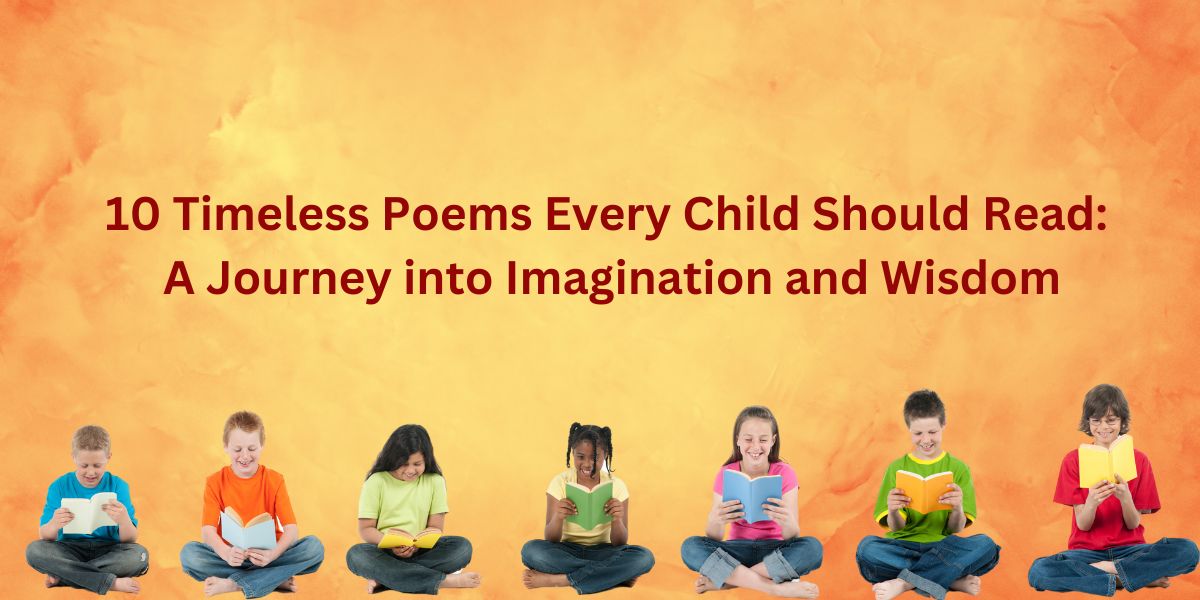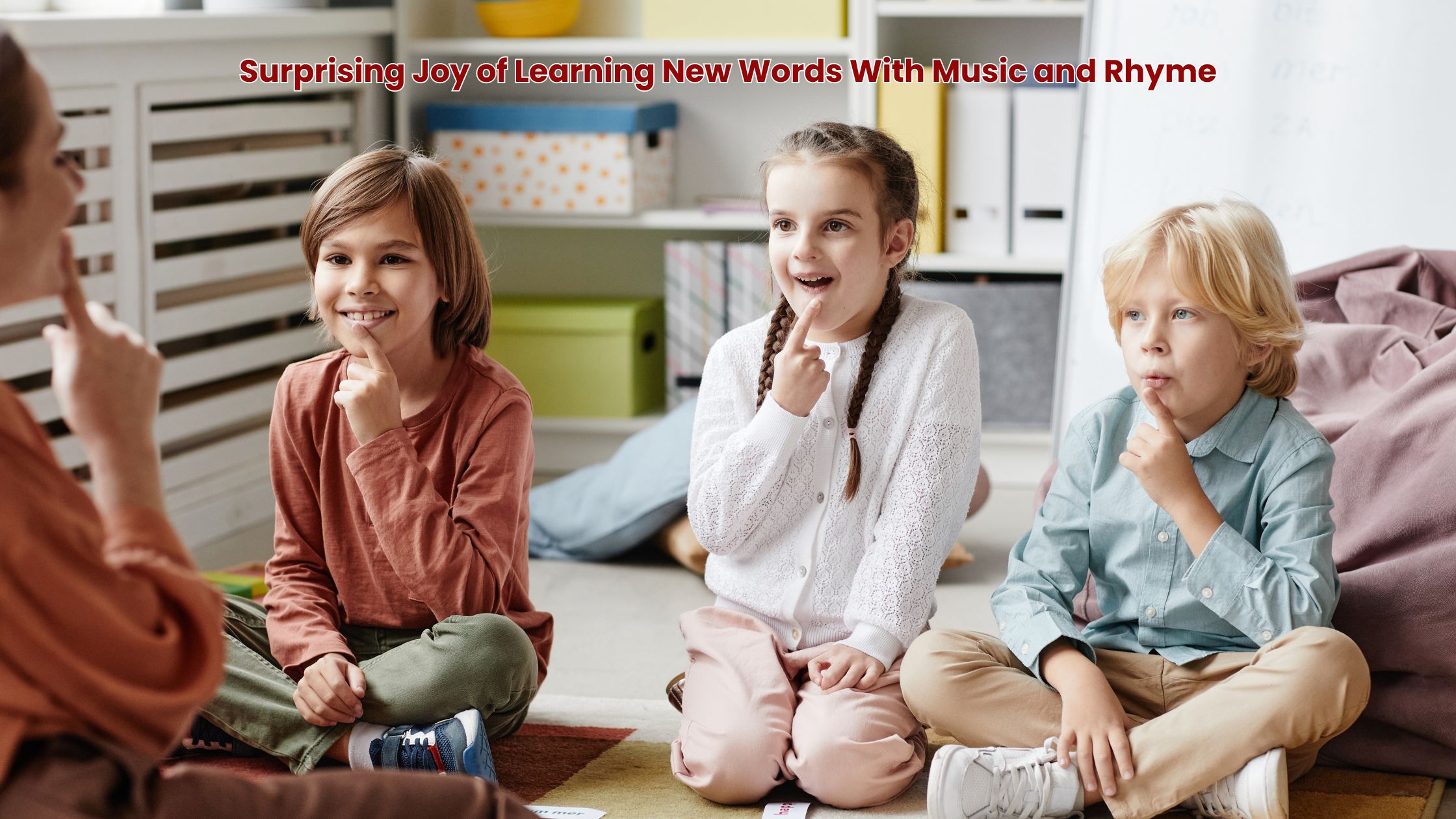
10 Timeless Poems Every Child Should Read: A Journey into Imagination and Wisdom
By Janaki Balasubramaniam
Introducing children to the enchanting world of poetry from an early age is like offering them keys to a treasury of imagination and wisdom. Poems have rhythmic verses and vivid imagery. Their magical ability to captivate young minds with those features are high. In this curated collection, we present 10 timeless poems. Each accompanied by compelling reasons why these verses transcend mere words. It becomes cherished companions in the unfolding adventure of growing up.
- Where the Sidewalk Ends” by Shel Silverstein:
“Where the Sidewalk Ends” by Shel Silverstein is a whimsical exploration of a fantastical place. It is where imagination knows no bounds. The poem invites readers to escape the confines of reality. The word “whimsical” refers to something that is playful, or fanciful. It characterizes a sense of spontaneous, lighthearted creativity. Whimsical things often have a quirky, imaginative, or humorous quality. They may deviate from the usual or ordinary in a delightful way. In essence, whimsical elements possess an element of charm, unpredictability, and creative spontaneity. Further embrace the limitless possibilities of creativity found where the sidewalk ends. Shel Silverstein, a line that emphasizes imagination and creativity is:
“There is a place where the sidewalk ends
And before the street begins,
And there the grass grows soft and white,
And there the sun burns crimson bright,
And there the moon-bird rests from his flight
To cool in the peppermint wind.”
- “The Owl and the Pussycat” by Edward Lear
“The Owl and the Pussycat” is a delightful poem. This poem is nonsensical narrative of an owl and a cat who embark on a whimsical sea voyage. They highlight the power of love and the joy of shared adventures in a fantastical setting. Edward Lear’s delightful narrative takes children on a journey with the owl and the pussycat. It fosters a connection with nature through a charming and imaginative tale. Refer these lines,
“The Owl and the Pussy-cat went to sea
In a beautiful pea-green boat,
They took some honey, and plenty of money,
Wrapped up in a five-pound note.”
- “A Dream Within A Dream” by Edgar Allan Poe
“A Dream Within A Dream” by Edgar Allan Poe explores the theme of the impermanence of reality and the elusive nature of time. The poet grapples with the idea of holding onto moments and experiences. He only finds them slipping away like grains of sand.
“Yet if hope has flown away
In a night, or in a day,
In a vision, or in none,
Is it therefore the less gone?
All that we see or seem
Is but a dream within a dream.”
These lines convey Poe’s contemplation on the fleeting nature of hope. The ephemeral quality of our perceptions, suggesting that what we perceive as reality. It may be just a transient dream within the larger dream of existence.
- Jabberwocky” by Lewis Carroll
“Jabberwocky” is a whimsical and nonsensical poem. It tells the story of a young hero slaying the monstrous Jabberwock. The crux lies in the vivid and inventive language. It creates a sense of adventure and mystery. Despite the poem being filled with made-up words and fantastical elements.
“‘Twas brillig, and the slithy toves
Did gyre and gimble in the wabe;
All mimsy were the borogoves,
And the mome raths outgrabe.”
These lines showcase Carroll’s playful use of language. The words themselves create a unique and imaginative atmosphere. It contributes to the overall sense of whimsy and fantasy in the poem.
- The Road Not Taken” by Robert Frost
“The Road Not Taken” by Robert Frost reflects on the theme of choices and the impact they have on one’s life. It explores the idea that the paths we choose shape our journey and define our experiences.
“Two roads diverged in a yellow wood,
And sorry I could not travel both
And be one traveler, long I stood
And looked down one as far as I could
To where it bent in the undergrowth.”
In these lines, the speaker contemplates a metaphorical crossroads. He express the difficulty of choosing between different paths in life. The poem delves into the consequences and reflections that arise from the choices we make.
- “The Caterpillar” by Christina Rossetti
The poem “Caterpillar” by Christina Rossetti is a short, poem. It is whimsical piece that captures the transformation of a caterpillar into a butterfly. The crux of the poem lies in the metamorphosis of the caterpillar. It symbolizes the cycle of life, death, and rebirth, as it transforms into a butterfly.
“Brown and furry
Caterpillar in a hurry,
Take your walk
To the shady leaf, or stalk,
Or what not,
Which may be the chosen spot.”
These lines describe the caterpillar’s journey. As it chooses a spot for transformation. It highlights the simplicity and beauty of nature’s cycle. The poem, with its rhythmic verses, conveys the wonder of life’s continual renewal through the process of metamorphosis.
- “Wynken, Blynken, and Nod” by Eugene Field
The poem “Wynken, Blynken, and Nod” is a lullaby. It tells the story of three children who sail off in a wooden shoe to the land of dreams. The crux lies in the whimsical journey of these children as they set sail on a cosmic adventure, guided by their sleepy, dreamy imaginations.
“Wynken, Blynken, and Nod one night
Sailed off in a wooden shoe —
Sailed on a river of crystal light,
Into a sea of dew.”
These lines capture the magical beginning of the children’s journey. As they embark on their wooden shoe into the dreamy landscapes of the night. The poem is gentle rhythm and imaginative storytelling. It creates a soothing and enchanting experience for the readers.
- “If” by Rudyard Kipling
“If” by Rudyard Kipling is a poem that imparts valuable life advice and wisdom. The poem revolves around the qualities and virtues that one should embody to navigate life. It emphasizes traits such as resilience, determination, patience, and integrity.
“If you can dream—and not make dreams your master;
If you can think—and not make thoughts your aim;
If you can meet with Triumph and Disaster
And treat those two impostors just the same;”
These lines convey the idea of maintaining a balanced perspective. It stays grounded in reality, and facing both success and failure with equanimity. “If” is a timeless piece that continues to resonate for its universal and enduring wisdom.
9.”The Walrus and the Carpenter” by Lewis Carroll
“The Walrus and the Carpenter” is a narrative poem. From the book, “Through the Looking-Glass, and What Alice Found There.” The poem involves the Walrus and the Carpenter tricking a group of oysters into joining them for a walk. It is only to devour them in the end.
“The time has come,” the Walrus said,
“To talk of many things:
Of shoes—and ships—and sealing-wax—
Of cabbages—and kings—
And why the sea is boiling hot—
And whether pigs have wings.”
The poem is a whimsical and satirical exploration of various topics. It uses the conversation between the Walrus and the Carpenter as a framing device. Carroll uses a clever wordplay and commentary on the absurdities of life.
- “The Tyger” by William Blake
The poem explores the nature of creation. The duality of existence, and the awe-inspiring yet terrifying aspects of the divine. The central question ponders how a benevolent creator could also bring forth such a fearsome and powerful creature as the tiger.
“Tyger Tyger, burning bright,
In the forests of the night;
What immortal hand or eye,
Could frame thy fearful symmetry?”
These opening lines set the tone for the poem. It depicts the intensity and mystery surrounding the tiger. The poem raises profound questions about the origin.
In the realm of childhood, where each day unfolds as a new chapter, these 10 poems stand as companions. It offers not just literary delight but also invaluable life lessons. As children embark on the journey of reading these verses, they enter a world were imagination. They know no bounds, and wisdom takes root in the fertile soil of young minds. These poems are not merely words on pages but guides. It leads children through the enchanting landscapes of creativity, emotion, and ethical understanding. Through the magic of poetry, young readers can forge a connection with the profound beauty. That language holds, creating memories that will linger in their hearts for a lifetime.
–Article by Janaki Balasubramaniam, Educator at Little Laudable Learners



